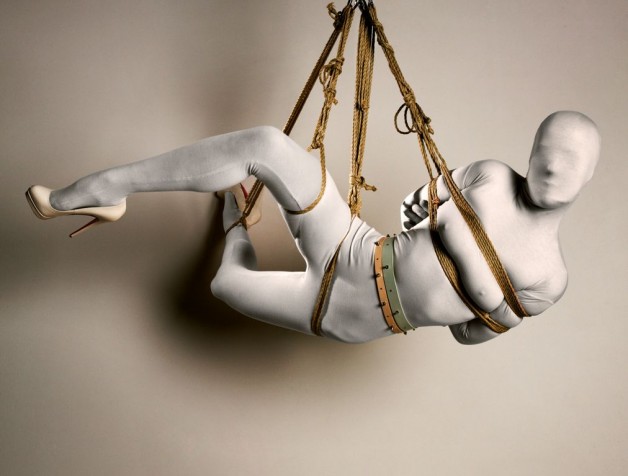Everyone is rushing headlong into suspension these days and sadly this often means that the vital knowledge, which makes for safe(r) and more elegant suspensions, is often skimped along the way. It seems very few are aware of the nuances that make all the difference, things like the angle of the rope making the difference between snagging and a clean movement. It is not a subject you can learn by reading, assuming a comprehensive guide exists. I have certainly not seen one yet. Unless you have a very experienced friend with a fair bit of time to invest, you are unlikely to learn that way either.
What is really worrying is that it is not unusual to find dangerous mistakes in the work of students who claim to be quite competent. Such errors include bad rope placement, lack of control, unsafe tie-offs, poor ties that risk nerve damage, under-estimating the safety margins of their kit and badly constructed ties; any of which could lead to an accident.
Even as a veteran of 1,000’s of suspensions, I was surprised how much I learned during Kazami Ranki’s recent classes. For example, how he ties on a bamboo pole and the small changes that make a mundane pose look amazing, new ways of doing side suspensions, a different approach to routing the uprights of the Mt Fuji, a better way to finish the 3rd rope and why a nodome (a type of friction) done the ‘wrong way’ can be right. The most embarrassing revelation was that the parallel arm box-tie that we confidently call a takate-kote is no such thing! Takate-kote refers specifically to a ‘high hands’ version where the wrists cross in an upwards X-shape (kote=back of hand/forearm and takate=high hand). What we should say is ‘gote’ or ‘gote shibari’. You live and learn.
There are numerous tricks that Nina and I have picked up from our own experience or the numerous classes with top-flight Japanese kinbakushi that enhance rope control and make tying look slick and effortless. As they appear to be largely undocumented, it is no big surprise that they are not commonly known. Of course, we don’t claim to know it all as even now I feel I have only scratched the surface. However, in an effort to pass on some of this experience, I have decided to run group classes on suspension. Don’t expect to come away an expert, that takes time and practice, although you will be far better equipped with a solid grounding that will be allow you to develop the right techniques and take those first steps confidently. The first introductory classes was on Saturday 1 June and we had some great feedback.
“Thank you for a great course, I appreciated the practical advice and the constructive criticism on my tying. I have lots of problems that still need to be ironed out, of course, but the box ties I tried this weekend were visibly better.” GreenGorilla, Switzerland
“It was a nice level and I felt comfortable with you and everyone there so hopefully I can make it over for another one. Until then, practice practice! :)” bi_trouble, Ireland
There will be a repeat of this course on 7 July with a follow-up with more advanced techniques on 7 September. Regardless of whether you think you know about suspension, you will undoubtedly learn something even at the introductory class.
Suspension techniques class: 10:30-16:00, Sat, 6 July
This course is designed to introduce students to suspension using proven Japanese techniques. As a pre-requisite, students should be able to confidently tie a gote shibari (a box-tie often erroneously called takate-kote) suitable for suspension. Areas covered include:
- Review and, correction if required, of gote shibari (box-tie)
- Safety & risk assessment: Rope, hardware, software (the person tied) & hard-points
- Tie-offs
- Handling rope & loads
- The pro’s & con’s of friction
- Pivot points & balance
- Gote shibari based suspension
If time and student progress permits, we will also teach Nina’s innovative hip harness, which offers an excellent base for a range of suspensions.

